How to Buy a Shipping Container: 5 Things to Consider
 Marissa Morin | Jan 12, 2022
Marissa Morin | Jan 12, 2022
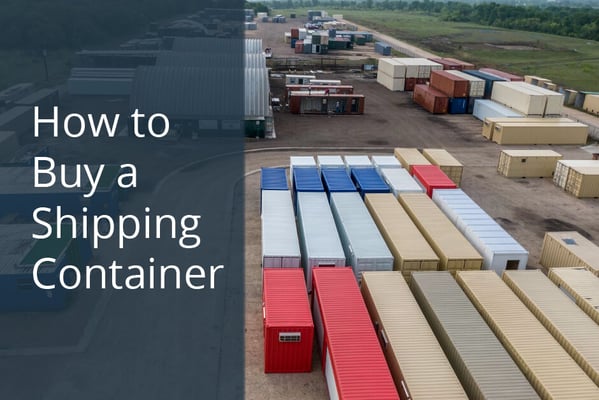
Shipping containers – also known as conex containers, intermodal containers, ISO containers, or sea/ocean containers – were originally designed to store and transport materials and products on ships, rails, or trucks. Today, their features and characteristics make them ideal for uses beyond just shipping – as portable storage units, industrial equipment enclosures, workspaces, living spaces, and more.
Because these structures are remarkably sturdy, cost-effective, and easy to install (often not requiring a foundation); they eliminate the need to build from scratch and thereby reduce cost and waste. They also protect against the elements and can be easily modified to suit specific needs. Made of strong corten steel, they’re even stackable, which means you could use them to create multi-level structures.
When considering how to buy a shipping container, keep the following points in mind.
1. Do you want a modified container or an unmodified container?
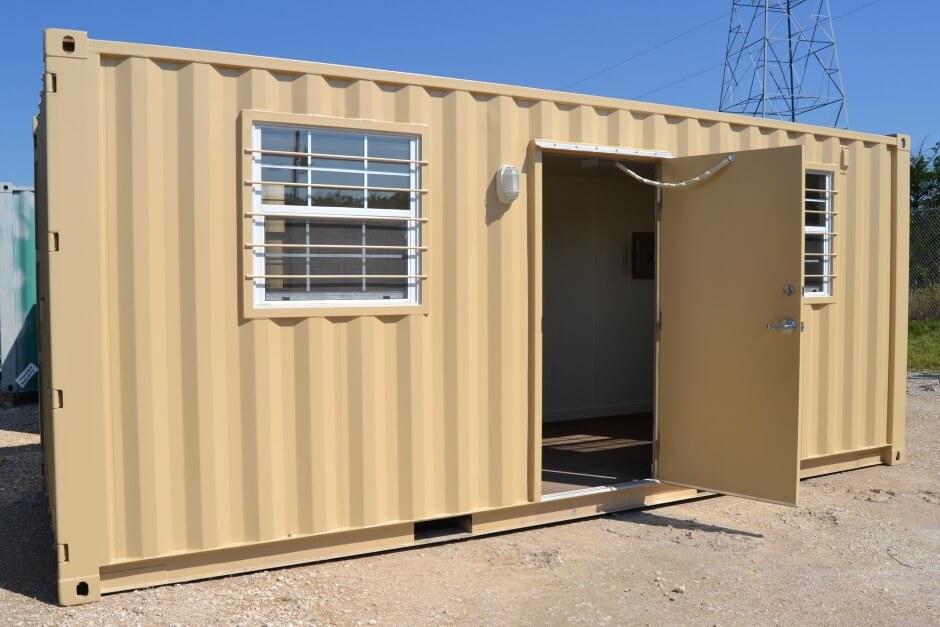
Modified shipping containers are the offices, living spaces, and advanced equipment enclosure structures that many companies rely on. These containers are outfitted with personnel doors, windows, lighting, and even features like wall insulation and climate control systems to keep people and items inside the units safe and protected.
Unmodified shipping containers are best for storage that doesn’t require climate control. In terms of buying shipping containers, unmodified containers are often cheaper than modified units.
Keep in mind that “wind and watertight” is a phrase typically reserved for unmodified containers making trips across the ocean, and therefore the container must be impenetrable to wind and water. Once a manufacturer modifies a container, the structure will continue to withstand normal wind and rain conditions and can be further enhanced with climate controls that heat, cool, and remove humidity.
How much to buy a shipping container?
There are many factors at play in the prices of shipping containers. These days, with supply chain inconsistencies and changing demand, even unmodified shipping containers can change in price frequently. Other factors you should consider in price, in addition to modifications, include size, age of the container, and the transportation to your location. We will discuss these in greater detail below.
Once you’ve determined what route you plan to take to purchase your shipping container (modified or unmodified), take the next step to consider what it is you actually want in a shipping container.
2. What type of container do you want?
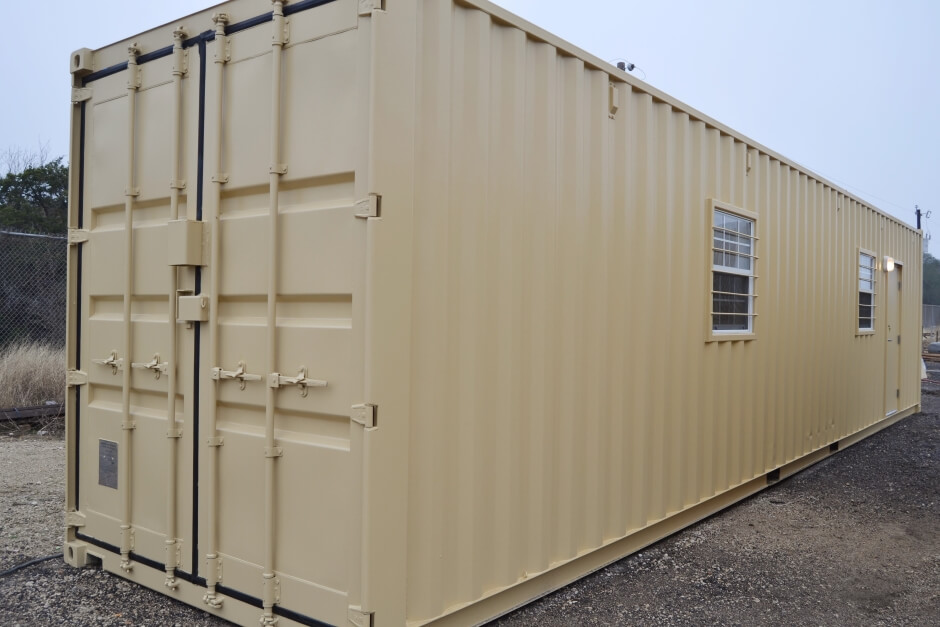
Shipping containers come in a few different sizes, but the standard sizes are 20-foot and 40-foot. Common heights are 8-foot 6-inches and 9-foot 6-inches (containers of this height are known as high-cube containers).
Interested in learning more about common shipping container dimensions?
Containers are typically categorized as “one-trip” (used but having only made one cargo trip) or used (making multiple trips across the ocean). One-trip containers are the newest containers you can purchase, having traveled across the ocean once. Used containers range in age and have varying levels of wear and tear, but remember, the typical service life of a container is about 10-12 years.
The lifespan of a container does depend on where it’s placed (the climate), how it’s being used (how much wear-and-tear it sees), and how many times (if any) it’s been moved to other locations. Consider this a conservative estimate, though; we’ve seen our containers maintain their structural integrity for 15+ years. Containers also maintain 50% of their original buying value for 25 years.
3. Which manufacturer is right for your container project?
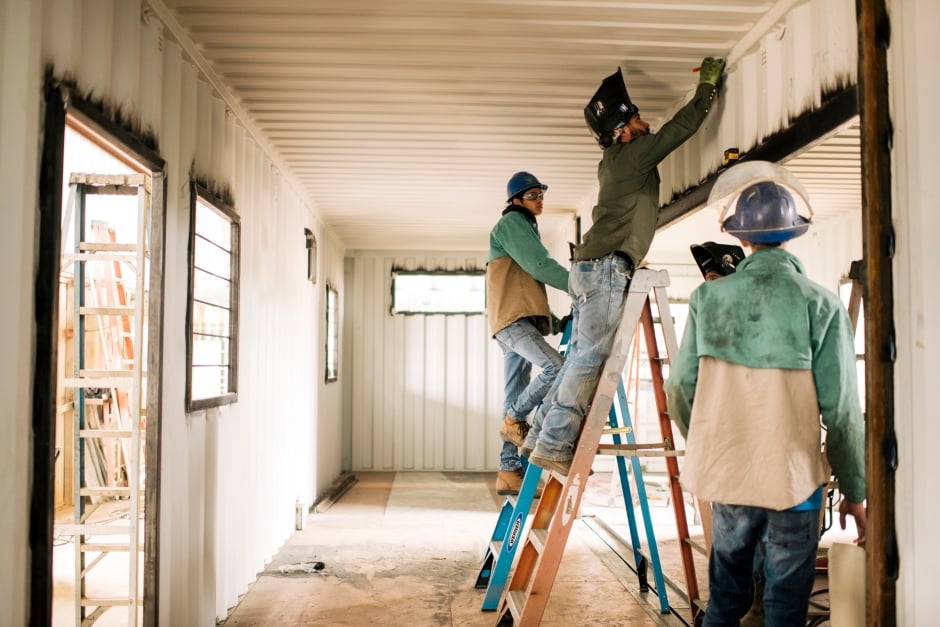
This question begs another: should you rent or buy your shipping container? Ultimately, you can often determine if you should rent or buy a container based on how long you need the unit. If you need the structure for anything more than a year, it’s typically more economical to buy the unit.
Additionally, buying gives you more freedom to customize, brand, and relocate the unit. Renting is ideal for simple offices or storage units that you want to get off your hands in the future. After you’ve decided between renting and buying, you can take the next step to find the right manufacturer to help execute your plan.
For unmodified containers (most frequently bought as opposed to rented) you might want to consider hiring an inspector to ensure you’re getting the right container verification for your project. This buying experience will look a lot different than renting or buying a modified container, which will likely be inspected along the modification process.
4. Have you discussed your project with your manufacturer in detail?

For the more advanced shipping container modifications, a consultation with your manufacturer is vital. Discussing your container project in detail will give you a better price estimate to determine how much the container will cost.
Laying out the plans with an expert will ensure you get the container structure you need that’s also safe. Experienced manufacturers understand how to modify containers, so they maintain their structural integrity.
5. What are your transportation options?

Finally, after you’ve walked through the steps of the project, you need to consider transportation options. You can transport containers in many ways including by truck, by train, and even by boat. Many modified containers are transported by truck and offloaded by a forklift, crane, or slid off the end of a tilt bed truck.
To choose the right option for your project, you need to first consider how far the container will travel to get to you and factor that into your budget and project timeline. Then, consider the many transportation options to select the one that makes sense for your location and project. The manufacturer you choose to work with will likely have a few suggestions for you to investigate.
Do you have a question that we haven’t answered here? Check out our FREE shipping container guide: Your Guide to Shipping Container Basics.
If you'd like to learn more about working with Falcon to get a modified shipping container project in motion, don’t hesitate to reach out! Contact Falcon Structures at 877-704-0177 or email us at Sales@FalconStructures.com.
SUBSCRIBE
- Shipping Container Modifications
- How-Tos
- Workspace
- Commercial Construction
- Multi-Container Buildings
- Storage Solutions
- Industrial Enclosures
- Bathrooms & Locker Rooms
- Oil & Gas
- Climate Control
- Green Building
- Living Space
- Industry Insight
- Military & Training Facilities
- Water Treatment Solutions
- Energy
THINK INSIDE THE BOX®
WITH OUR BLOG
Get everything from shipping container basics, to detailed how-tos and industry news in our weekly blog. Stay inspired and subscribe!
RELATED BLOGS
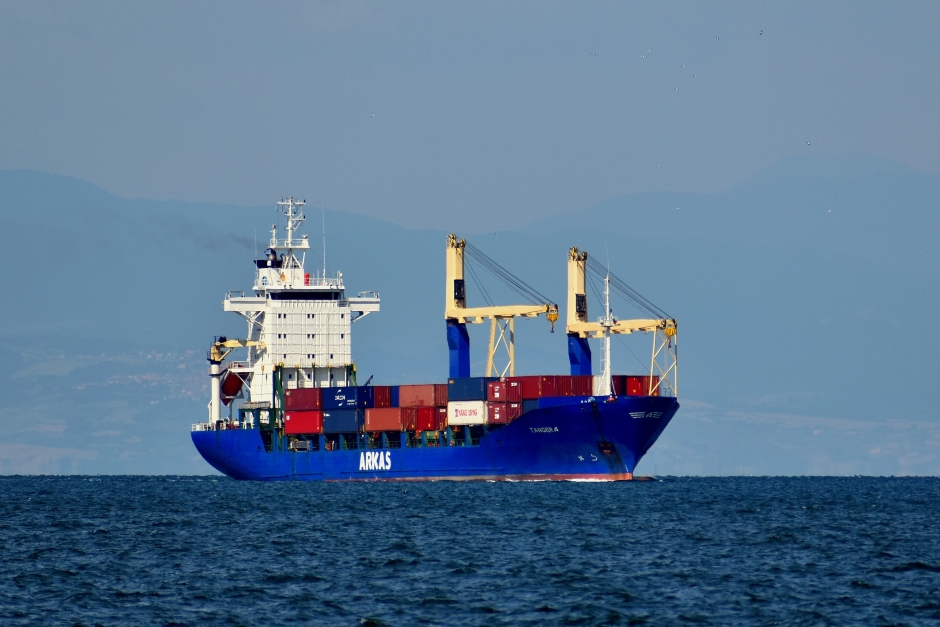
Can I Transport a Modified Shipping Container Overseas by Ship?
Marissa Morin | Jun 10, 2020 | 4 min read
READ MORE
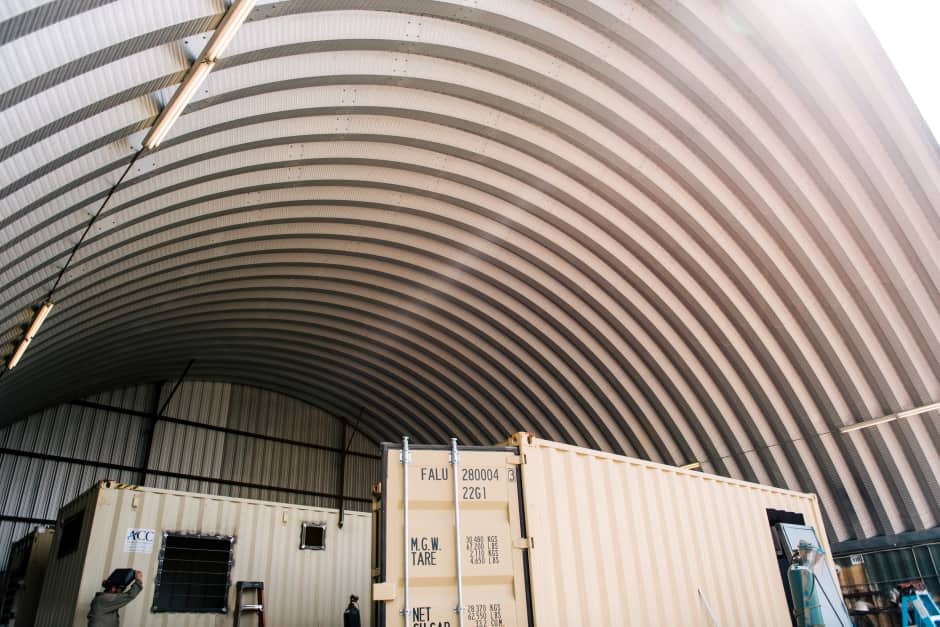
Top Business Benefits of a Shipping Container Shop
Marissa Morin | Jan 13, 2021 | 2 min read
READ MORE
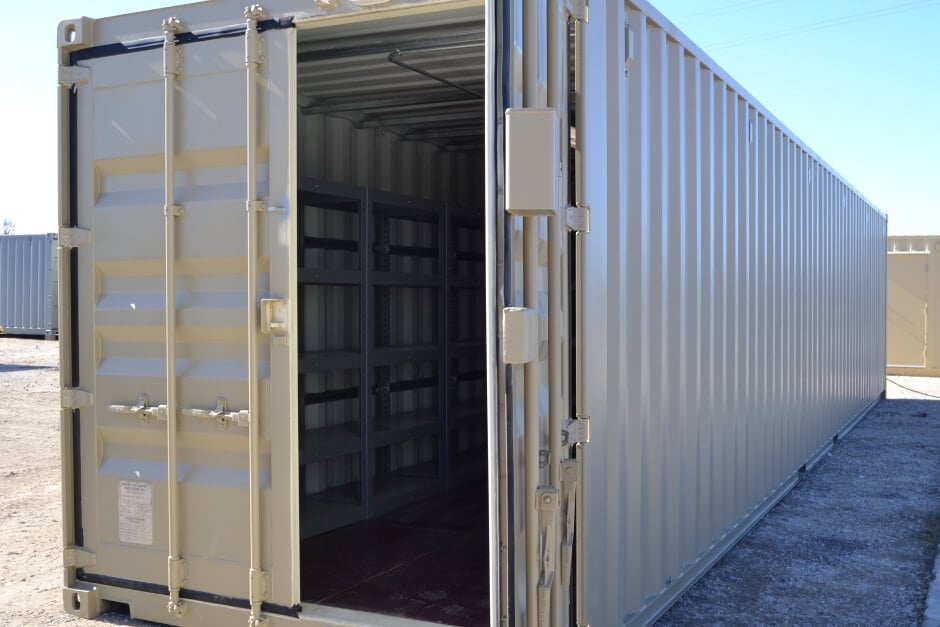
Construction Storage Containers: When to Rent and When to Buy
Marissa Morin | Oct 27, 2021 | 3 min read
READ MORE
